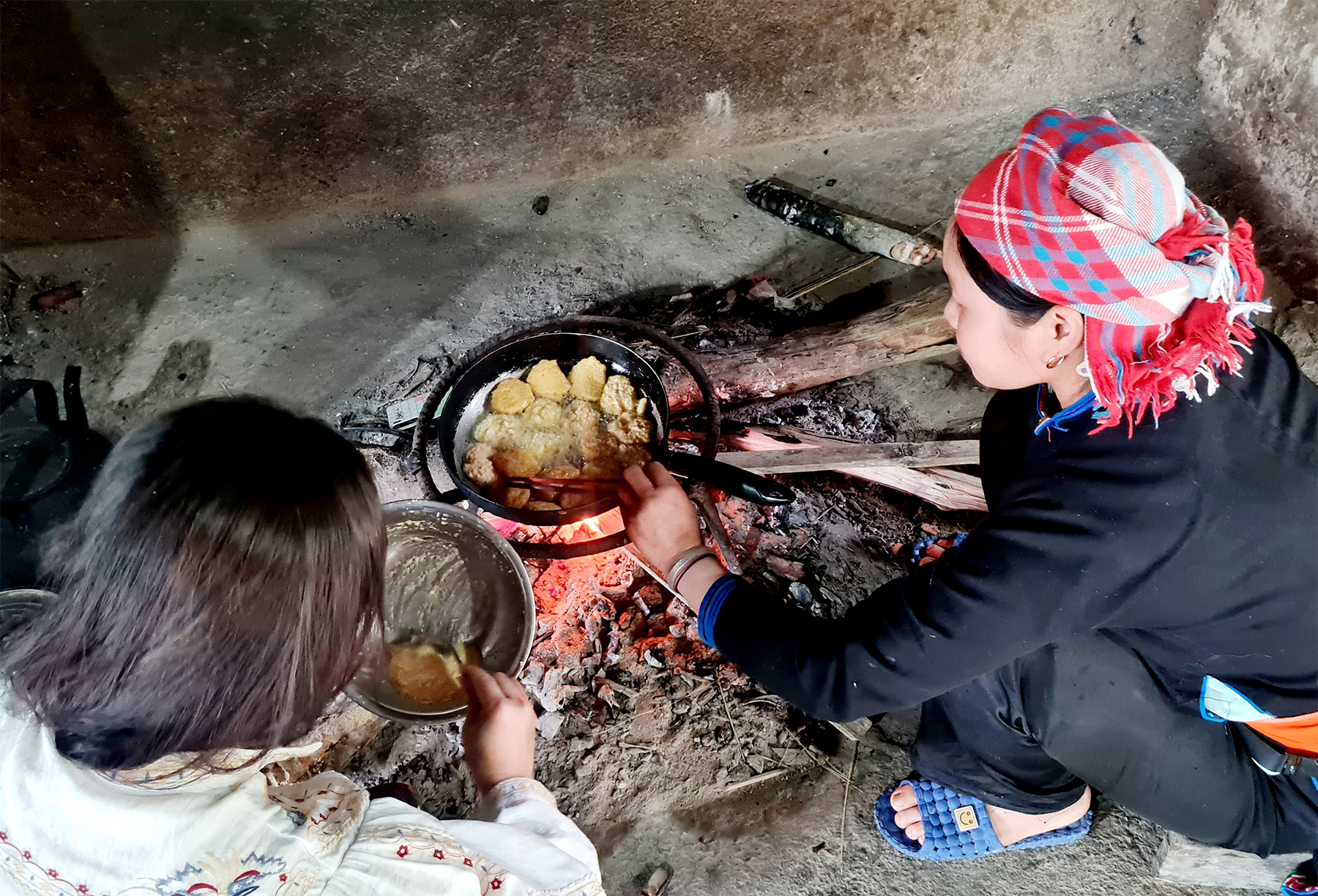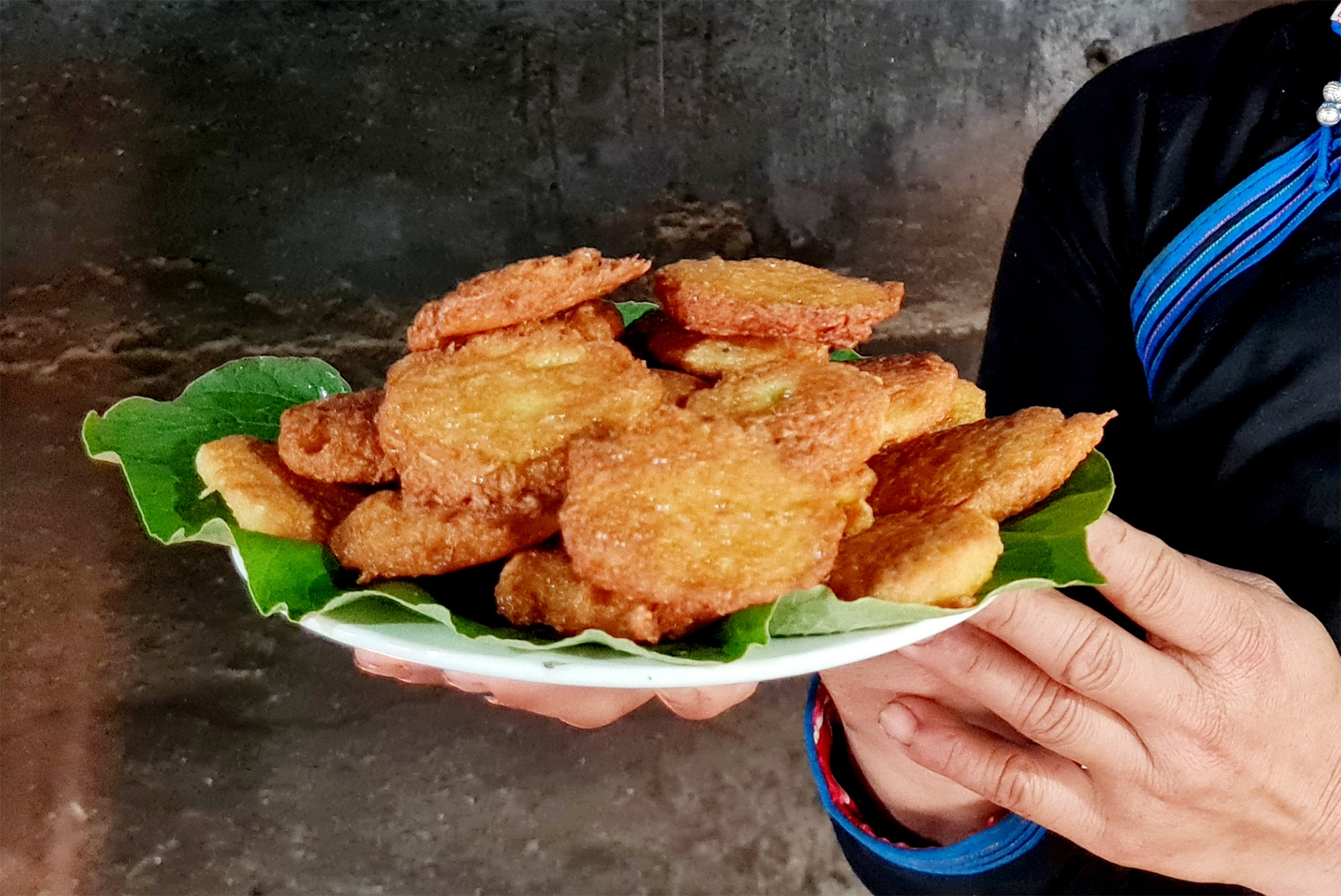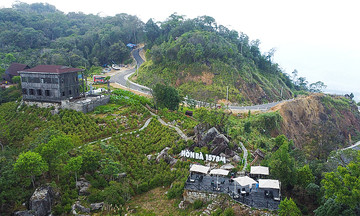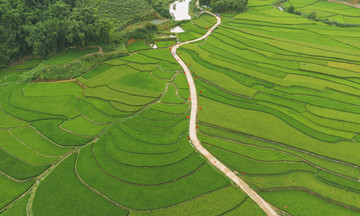Thanks to the popularity of a reality TV show featuring various celebrities, Ban Lien, located over 20 km from Bac Ha's center, has become a sought-after community tourism destination. Vang Thi Thong, owner of Ban Lien Pine Homestay, said that after 6 years in the tourism business, her homestay has been fully booked for three months straight, from July to September, for the first time.
Visitors immerse themselves in the local lifestyle, foraging for wild vegetables and bamboo shoots, picking tea leaves, fishing in streams, crafting conical hats and straw mats, and experiencing traditional Tay cuisine, including cassava cakes.
 |
Tourists experience making cassava cakes at a homestay in Ban Lien. Photo: Lao Cai Information Portal |
Tourists experience making cassava cakes at a homestay in Ban Lien. Photo: Lao Cai Information Portal
Cassava cakes were created by the Tay people as a way to share food among their children, especially in large families with limited resources. "Many families have 5 or 6 children, and a single egg can't be divided evenly. So, the mothers devised cassava cakes so everyone could eat," Thong explained.
The recipe is simple. Cassava, primarily grown in home gardens, is selected at the perfect stage of ripeness – not too old or too young. After harvesting, the cassava is peeled, washed, and grated into a powder using a thorny rattan tool. It's then mixed with eggs, pepper, and salt to taste, shaped into patties, and fried in hot oil. If a grater isn't available, the cassava can be steamed until cooked and then mashed.
The dish offers the aroma of cooked cassava, the richness of eggs, and is often dipped in soy sauce for added flavor. Cassava cakes are enjoyed as a savory dish in everyday meals or wrapped in dong or banana leaves to be carried to the fields. They are also served during special village occasions as a local delicacy.
"Many guests staying at the homestay request to make and eat cassava cakes," Thong added.
 |
Finished cassava cakes. Photo: Lao Cai Information Portal |
Finished cassava cakes. Photo: Lao Cai Information Portal
Dr. Ma Ngoc Dung, former Deputy Director of the Vietnam Museum of Ethnology, who has spent years researching Tay culture, explained that cassava has long been a staple food for the Tay people, supplementing meals during times of scarcity or serving as a daily snack. Cassava is prepared in various ways, such as mixed with rice or used in dishes like banh day (sticky rice cake), banh chung (square sticky rice cake), and soups.
"Cassava cakes are gaining popularity among tourists and younger generations, as evidenced by the addition of eggs in the recipe. This dish may have emerged through inter-regional exchange, primarily from the lowlands, or may have existed only within smaller communities," Dung said.
On TikTok and other social media platforms, many viewers of the TV program have tried the recipe, praising its simplicity and deliciousness. Some TikTok users have even added onions and chili peppers for a spicy kick, similar to the flavor of cassava cakes in southern Vietnam, and recommend soaking the cassava in water to remove its sap and toxins.
Ha Nhi, from Hanoi, also tried the recipe, describing the cakes as having a slightly crispy exterior, a soft and smooth interior, and a fragrant aroma. "It's a simple snack, but so delicious, you can't get enough of it," Nhi said.
Many people are following Thong's recipe to make cassava cakes at home. Video: Goby97
Tam Anh












